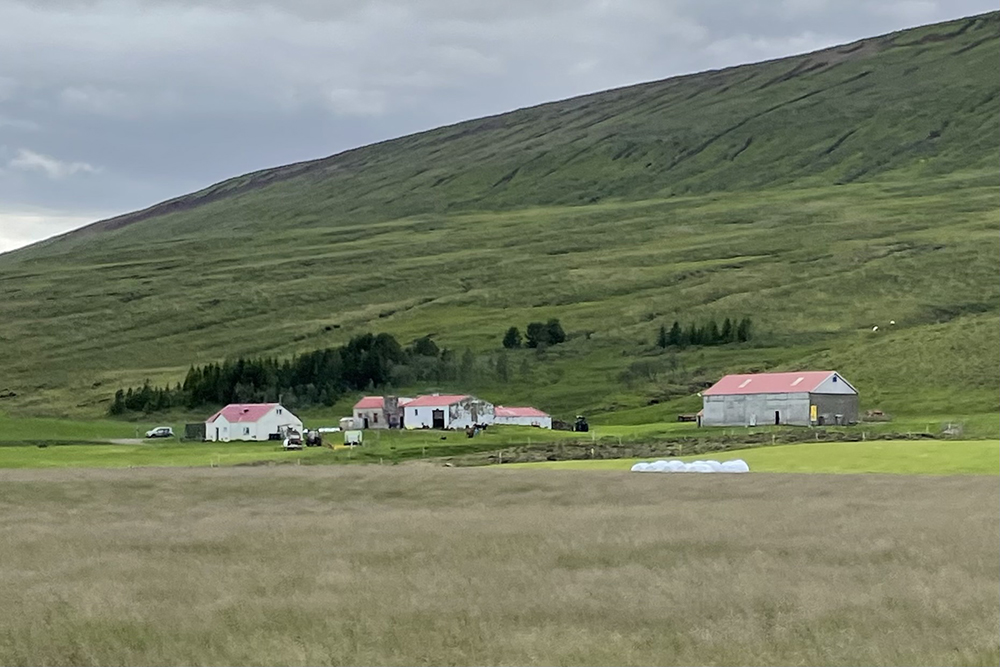Winter darkness
Time for a good book
Author: Caroline Gunnarsson (1975)

The snow is good for the darkest days. Christmas is the ornament of the year, which is best enjoyed in a white setting. And when the earth is completely covered in white snow, one first begins to believe that, here in the northern hemisphere, Christmas will come on time as it usually does. Then the mind seeks friends more often than it takes time for at other times of the year. The hustle and bustle that accompany our modern, demanding culture strain and take their toll on people’s joy in life, but at Christmas time they let go, give free rein to their childish nature, buy themselves increased joy in the company of good friends without considering the cost, let toil and worries wait for a better time.
It is tempting to buy a good book as a Christmas present for a close friend and read between the covers yourself before it is wrapped up and handed over. This does not do the book any harm, if one is careful not to nibble on a well-buttered slice of bread while reading. It adds much more value to be prepared to discuss the contents with the recipient in a relaxed atmosphere when the day is draws to a close, and the festive cheer is mostly over.
The short days are not to everyone’s taste. Dark mornings and afternoon twilight are a psychological constraint for some, who do not get to enjoy life until the days begin to lengthen. In Iceland, where the midwinter day is shorter and the twilight hours are more numerous than we are used to, stories are told of people being bedridden for weeks by frustration and boredom – a disease called skarðdegi.
But the skarðdegi suits the temperament of some people. – The darkness has many enchantments, and those who know how to enjoy it regret every moment that the working day steals from it and pretends to own it.
Among the things that modern culture has neglected to preserve are the old open fireplaces and stoves, which became red-hot when heated and let the flame glow through the draft holes in their front. This illuminated the twilight but did not destroy it. It is also as if the warmth of home is even more pleasant if you see into the fire. It is fun to chat by a fireplace at dusk. Then the tongue becomes lively and free, and the flight of imagination has no limits. Then long and intricate stories are often spun from a small piece of cloth, and anything can be believed. Many a folktale that has gained eternal life was created in a single twilight hour by the sweet glow of an open fire.
An old man in Halifax once told me that the fire department there had taken to sealing the chimneys of most of the old houses in the city, and that he had been heartbroken by this measure.
I understood from the old man that the inherited culture of the people of the East Coast of Canada had suffered from this. Now it is either light or dark in the evening, he said, but never twilight. In the past, people enjoyed themselves well into the evening by the dim light of the fire. Ghost stories are never told now, and even if someone did, no one would believe them because mystical creatures do not show themselves where electric lamps illuminate every nook and cranny.
Yet it is still pleasant to live in the darkest days if one knows how to serve laziness and defy tedious tasks that really have no right to be done in the evening, especially in the middle of winter, when the sunshine does not tempt one to them and there is nothing to gain from them except muscle aches. At this time of year, many of the rulers of the animal kingdom lie in hibernation, so why shouldn’t humans be allowed to relax a little in the struggle for survival?
Perhaps we do this unknowingly, friends of the darkest days, because strange as it may be, we manage to fit in with this season. Outside, the snow is piled up to the middle of the door, while unread books have been piling up on the shelves indoors for months. Finally, we get to read them, so we immerse ourselves, setting in to our books until the next morning, letting the snow take its toll. Who knows? The sun may melt it from the door if we wait patiently.
This is a daydream, of course – but daydreams belong to the winter darkness, along with reading books and long discussions in the twilight. These long, quiet evenings are blissful, even though we can’t avoid shoveling snow from the door and going to work early the next morning.

